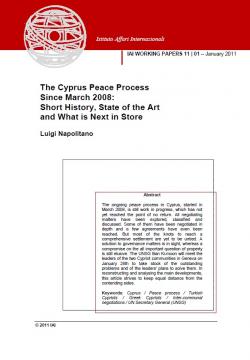The GCC Countries and the Arab Spring. Between Outreach, Patronage and Repression
In 2011 the Gulf Cooperation Council (GCC) countries have been confronted with increasing challenges stemming from the Arab uprisings. Internally they have had to face popular mobilization and discontent, triggering a mixed reaction made up of economic handouts, patronage, limited political and economic reforms as well as military intervention and repression. Externally they have actively intervened in support of the protest movements in Syria and Libya and enthusiastically facilitated president Saleh’s departure from Yemen. At first sight these responses may seem schizophrenic. At closer inspection, though, managing instability by shoring up friendly regimes on the inside and expanding the GCC's influence outside represent two sides of the same coin. This paper aims at unpacking the GCC's responses to the "Arab Spring" by making use of the concept of "double standard". It is argued that three main dichotomies - inside vs. outside, monarchies vs. republics and Sunnis vs. Shiites - explain the GCC's reaction and its implications for the future of the MENA region.
See also "The GCC and the Arab Spring: A Tale of Double Standards", in The International Spectator, Vol. 47, No. 4 (December 2012), p. 110-126. Subsequently publ. in John Davis (ed.), The Arab Spring and Arab Thaw. Unfinished Revolutions and the Quest for Democracy, Farnham and Burlington, Ashgate, 2013, p. 164-178, ISBN 978-1-4094-6875-2
-
Details
Roma, Istituto Affari Internazionali, 2012, 15 p. -
Issue
1209 -
ISBN/ISSN/DOI:
978-88-98042-46-3
Introduction
1. The "Arab Spring" reaches the Gulf shores
2. Explaining the GCC's responses to the "Arab Spring"
2.1. Inside vs. outside the GCC
2.2. Monarchies vs. republics
2.3. Sunnis vs. Shiites
3. The GCC's double standard: the challenges ahead
References
Topic
Tag
Related content
-
Publication03/02/2015
The GCC and the Arab Spring
leggi tutto -
Publication04/01/2014
The GCC Countries and the Arab Spring
leggi tutto



